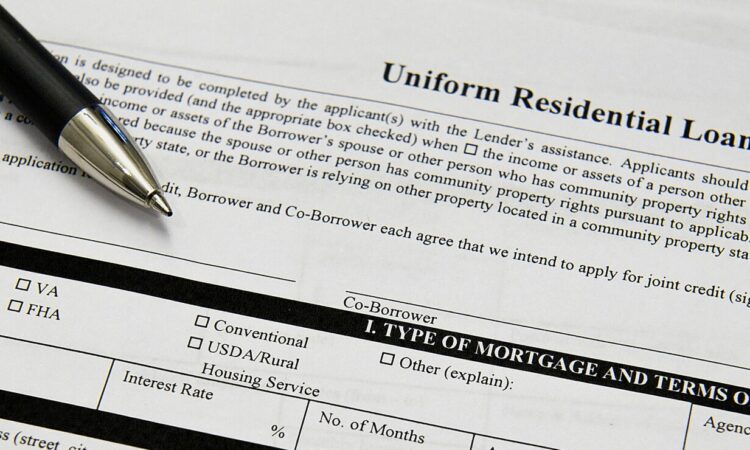
Top US banking regulators have updated decades-old rules that are meant to tackle redlining and boost lending to lower-income areas.
Under Tuesday’s plan, the landmark 1977 Community Reinvestment Act will for the first time cover online and mobile <-bsp-bb-link state=”{“bbHref”:”bbg://securities/BKX%20Index/GP”,”_id”:”0000018b-63a6-d53f-a1eb-7faff14b0000″,”_type”:”0000016b-944a-dc2b-ab6b-d57ba1cc0000″}”>banking-bsp-bb-link> services. That means the grades that regulators give firms for lending to low- and moderate-income communities won’t be based just on the locations of physical branches. The overhaul will also stiffen other criteria for big lenders.
The <-bsp-bb-link state=”{“bbHref”:”bbg://securities/13598Z%20US%20Equity”,”_id”:”0000018b-63a6-d53f-a1eb-7faff14d0000″,”_type”:”0000016b-944a-dc2b-ab6b-d57ba1cc0000″}”>Federal Reserve-bsp-bb-link>, <-bsp-bb-link state=”{“bbHref”:”bbg://securities/3688Z%20US%20Equity”,”_id”:”0000018b-63a6-d53f-a1eb-7faff14d0001″,”_type”:”0000016b-944a-dc2b-ab6b-d57ba1cc0000″}”>Federal Deposit Insurance Corp.-bsp-bb-link> and the <-bsp-bb-link state=”{“bbHref”:”bbg://securities/0194638Z%20US%20Equity”,”_id”:”0000018b-63a6-d53f-a1eb-7faff14d0002″,”_type”:”0000016b-944a-dc2b-ab6b-d57ba1cc0000″}”>Office of the Comptroller of the Currency-bsp-bb-link> on Tuesday approved the changes.
“The rule maintains a focus on evaluating bank performance in areas where banks have deposit-taking facilities, but also enables evaluation of retail lending and community development activities outside of branch networks,” <-bsp-person state=”{“_id”:”0000018b-63a6-d53f-a1eb-7faff14e0000″,”_type”:”00000160-6f41-dae1-adf0-6ff519590003″}”>Michael Barr-bsp-person>, the Fed’s vice chair for supervision, said in a statement. He added that the changes will clarify how the rules apply and make them more consistent.
Since its introduction last year, the effort has faced criticism from both industry and consumer advocates. Banking trade groups have argued the new criteria for rating lending could make it too hard to achieve a high score. Meanwhile, critics have said the changes didn’t go far enough.
Dennis Kelleher, who leads the Washington-based Better Markets group that often advocates for tougher rules, said the CRA reforms are well-intentioned but unlikely to work.
“It will likely continue to miss classic cases of redlining and enable banks to continue getting high if not perfect CRA ratings while continuing to reduce lending to low- and moderate-income communities,” Kelleher said.
Bank watchdogs evaluate the way lenders service lower-income communities where they operate, which in turn can affect their ability to open new branches and make acquisitions. Weak scores could hamstring such expansion, though critics say banks have long been graded too easily.
Data show that many non-White communities remain underserved almost half a century after the passage of the CRA. For example, Black borrowers in low- and moderate-income areas in most major US cities receive disproportionately fewer loans.
Read More: <-bsp-bb-link state=”{“bbDocId”:”RGB1RDT0AFB4″,”_id”:”0000018b-63a6-d53f-a1eb-7faff1500000″,”_type”:”0000016b-944a-dc2b-ab6b-d57ba1cc0000″}”>Banks Balk at Biden Team’s Anti-Redlining Plan, Teeing Up Clash-bsp-bb-link>
In a bid to address that, the rule includes a revised test to measure a bank’s closed-end mortgages, automobile loans, small business and small farm loans. It also streamlines the criteria.
Redlining is a discriminatory practice where lenders avoid offering mortgages and loans in areas based on the race or national origins of people who live there, according to the <-bsp-bb-link state=”{“bbHref”:”bbg://securities/4131761Z%20US%20Equity”,”_id”:”0000018b-63a6-d53f-a1eb-7faff1510000″,”_type”:”0000016b-944a-dc2b-ab6b-d57ba1cc0000″}”>Justice Department-bsp-bb-link>. The agency announced this month that an initiative to combat redlining had secured more than $100 million in relief for communities harmed by discriminatory lending practices.
A point of contention in the CRA overhaul has been provisions in the new rule that expand so-called “assessment areas” to focus more on lending activity beyond their physical presence in communities. Critics of the rule say the impact will be muted by the shift in the retail lending to nonbanks.
The CRA does not apply to nonbank lenders, despite these institutions accounting for 60% of all mortgage originations, including 75% of all government and government agency mortgages, according to research by the Washington-based <-bsp-bb-link state=”{“bbHref”:”bbg://securities/13575Z%20US%20Equity”,”_id”:”0000018b-63a6-d53f-a1eb-7faff1510001″,”_type”:”0000016b-944a-dc2b-ab6b-d57ba1cc0000″}”>Urban Institute-bsp-bb-link>.
The rule would require large banks to disclose on their websites the distribution of home mortgage loan originations and applications in each assessment area by income, race and ethnicity using publicly available data under the Home Mortgage Disclosure Act.
Although these disclosures wouldn’t be incorporated into CRA scores, they would provide insight into banks’ lending in communities of color, FDIC Chairman
Compliance Costs
<-bsp-person state=”{“_id”:”0000018b-63a6-d53f-a1eb-7faff1540000″,”_type”:”00000160-6f41-dae1-adf0-6ff519590003″}”>Michelle Bowman-bsp-person>, a Fed governor who has been critical of the effort, said that the final version represented an improvement from earlier plans. However, she said that she wouldn’t back the plan because it was overly complex and costly.
“If banks will be required to satisfy new CRA requirements in new locations, potentially untethered to their deposit-taking footprint, it is entirely possible that banks will reduce their level of lending or operations in those areas,” she said in a statement.
She took issue with the $2 billion asset threshold that the plan would use to determine which banks would be covered by the CRA. Bowman said that level was too low and didn’t differentiate between smaller community banks and the largest lenders.
The <-bsp-bb-link state=”{“bbHref”:”bbg://securities/0429949D%20US%20Equity”,”_id”:”0000018b-63a6-d53f-a1eb-7faff1540001″,”_type”:”0000016b-944a-dc2b-ab6b-d57ba1cc0000″}”>Consumer Bankers Association-bsp-bb-link> said some of the updates “could unintentionally impact the consumers we are all trying to help.”
<-bsp-person state=”{“_id”:”0000018b-63a6-d53f-a1eb-7faff1560000″,”_type”:”00000160-6f41-dae1-adf0-6ff519590003″}”>Mehrsa Baradaran-bsp-person>, a University of California, Irvine law professor, said the changes put banks on notice.
“It’s good to have updates to remind banks that the problem of redlining is out there, but the CRA has never been up to the task,” she said. “It had never been a robust response to the problem.”
Also Tuesday, the Fed, FDIC and OCC finalized a proposal that would see banks with $100 billion or more put a spotlight on their exposure to climate-related financial risk. The agencies want those lenders to consider how they would respond to such risks in their governance, strategic planning, reporting and scenario analysis, among other areas.
(Updates with additional Fed climate measure in last paragraph.)
To contact the reporter on this story:
<-bsp-person state=”{“_id”:”0000018b-63a6-d53f-a1eb-7faff1580000″,”_type”:”00000160-6f41-dae1-adf0-6ff519590003″}”>Katanga Johnson-bsp-person> in Washington at [email protected]
To contact the editors responsible for this story:
Stephanie Stoughton
© 2023 Bloomberg L.P. All rights reserved. Used with permission.





